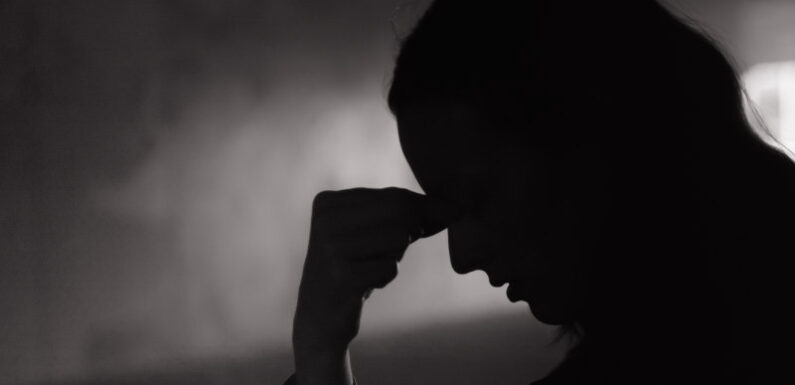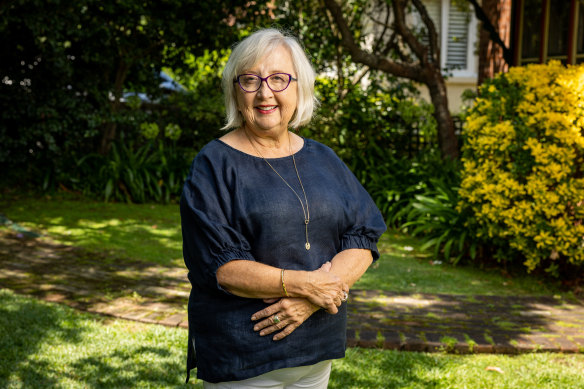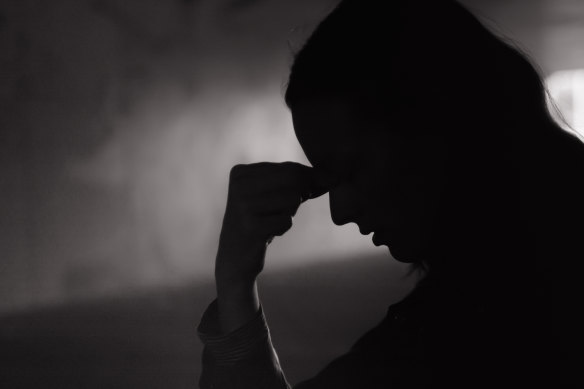
Save articles for later
Add articles to your saved list and come back to them any time.
Rising numbers of adolescents are picking up dangerous self-harming trends on popular social media apps, say mental health experts, who are pushing for Australia to strengthen its online content moderation policies.
Monash Health child psychiatrist, associate professor Michael Gordon, said TikTok was the standout app of concern and that usage in teenagers had soared during the pandemic.
The National Children’s Commissioner, Anne Hollonds, is pushing for tighter regulation of social media apps.Credit: Ben Symons
Gordon said there was a trend on TikTok called head banging, where people filmed themselves banging their head against walls or other hard objects, while other young people were “showing off” wounds inflicted through self-harm.
“There is this sense of being part of something. It creates a community,” he said.
“It can actually be a very dark place … a rabbit hole, where you kind of get sucked down into this of this echo chamber or these very negative thoughts.”
Daniel Lennon is the chief executive of Left and Right Counselling, which treats almost 500 young people aged 12 to 25 in Frankston and Mornington. He said that over the past three years the service had seen it’s highest-ever demand in young people seeking support for self-harming.
Lennon said he believed self-harming behaviours like the head banging were being fuelled by TikTok and that Australian authorities were not doing enough to protect young people.
“There are algorithms pushing self-harm content onto teenagers within minutes of them expressing interest in the topics,” said Lennon, whose counselling service had a waitlist of more than 50 people.
He said rising numbers of young people were also pulling out their hair in a disorder known as trichotillomania.
“We’ve had clients, young teenage girls, and they’re basically bald. It is just awful,” Lennon said. “There is content out there on these apps which shows them how to do it. Social media has become a tool that’s used for emotion regulation.”
Some young people report discovering how to self-harm by watching videos on social media.
Anne Hollonds, Australia’s Children’s Commissioner, wants the Australian government to enforce tighter regulations around social media apps, pointing to the UK where a children’s code was enforced that requires platforms to adhere to strict rules in the best interests of young people.
“We’ve allowed these tech companies to just do their own thing in Australia, and it’s been a bit like the Wild West. Anything goes for profit, including dangerous algorithms that take kids down very dark rabbit holes that actually do them harm,” Hollands said. “Australia is really lagging the rest of the world in dealing with this.”
Co-director of the Australian Association of Psychologists, Carly Dober, said clinicians started to see a marked rise in young people presenting with disordered eating and self harm in late 2020 and 2021, when several states were impacted lockdowns – but that despite lockdowns ending, the demand continued.
Dober said teenagers were also being exposed to social media trends where influencers were drinking laxative teas for weight loss and using a tight corset to try to get an hourglass body.
“Their young brains are still developing. They don’t have that innate ability to critically analyse 20 videos that you’ll see on TikTok in one minute,” she said.
“We know self-harm can almost have a contagion effect if it is trending online. There is this constant catch-up game because the tech moves way faster than laws and adults.”
The Australian Association of Psychologists is also pushing for a crackdown and heavier moderation on apps such as TikTok.
Dober said these regulations must be enforced by Australian authorities, warning that tech companies “cannot be trusted to regulate themselves because their bottom line is growth”.
Victorian teenager Kate, who did not want her real name used for privacy reasons, said she discovered how to self-harm by watching videos on social media at the start of the pandemic. During her worst periods, she was self-harming several times a day.
“There have been many instances where I have seen creators on social media platforms that have encouraged self-harming as a coping mechanism and given recommendations for different tools and strategies for self-harming,” said the 16-year-old, who is now recovering after seeking support.
“Eventually, I realised it did not help me to forget about my problems. Instead of dealing with them, it caused them to become more severe than before.”
Tech companies, including TikTok, are increasingly enforcing safety measures such as banning content promoting dangerous weight loss or self-harm. But Gordon said adolescents were finding ways to get around the constraints.
He said they were often “in the know” about phrases or hashtags that allowed them to seek out content on self-harm or dangerous dieting.
Gordon said he is also concerned about fitness influencers promoting powerful steroids such as trenbolone to adolescent boys on Instagram. Trenbolone, which is used by veterinarians for livestock, is being marketed as a way to get the “perfect physique”.
“What is not happening is that potentially harmful side effects are not being discussed,” he said. “It is hugely unregulated.”
Adolescent psychologist and co-director of the Australian Association of Psychologists, Sahra O’Doherty, said while self-harm was not a new phenomenon, it had risen markedly among teenagers at her Sydney clinic due to increasing numbers of young people posting videos about it on social media.
“It infiltrates the algorithms of these young people who may already be at risk of self-harming,” O’Doherty said. “Having more exposure to these sorts of things on TikTok, or wherever, normalises it for them.”
Gordon, who has specialised in adolescent psychiatry for more than 25 years, said social media had also been a force for good, teaching young people healthy studying habits, keeping them connected during the pandemic and de-stigmatised mental health.
Tips for parents from the experts:
Talk to your children about safety online including the benefits of social media as well as the dangers.
Listen with curiosity and try to learn more about social media apps from the young person by asking them about what they are seeing online.
Research shows that more than two hours or three hours a day online could lead to increased feelings of anxiety, depression and negative body image for adolescents.
Parents are also urged to monitor their own device usage around children.
His advice to parents was to foster healthy communication with their children in a relationship that was non-judgemental and built on trust.
“It’s about having that relationship where they’re likely to come to you and say, ‘Hey I’ve seen something online that’s pretty heavy duty. I’m not sure what to do about it, or how do I cope with this?’” Gordon said.
A spokesman for the federal Communications Minister, Michelle Rowland, said empowering young people to have safer experiences online was a top priority.
Australia’s Online Safety Act, which had measures in place to prevent children from accessing harmful material, was currently under review to adapt to changing technology.
“Through the eSafety Commissioner, the government is also funding important resources to empower parents and educators to recognise when children are facing wellbeing challenges stemming from the use of digital technologies,” he said.
TikTok’s country policy manager of trust and safety, Jed Horner, said the tech company took the safety of its community seriously. Last year, the company rolled out 60-minute screen time limits for every account belonging to a person under the age of 18.
“Our in-app ‘content levels’ mean that users aged 13-17 have an age-appropriate viewing experience, as part of our effort to prevent them from being exposed to overtly complex or mature themes,” he said.
TikTok searches for content related to self-harm or eating disorders were also immediately linked to support services such as the Butterfly Foundation, Kids Helpline and Lifeline, Horner said.
Kids Helpline: 1800 55 1800; Lifeline: 13 11 14
For support with an eating disorder call Butterfly’s National Helpline on 1800 ED HOPE (1800 33 4673). To chat online or for email [email protected] | Confidential and free support is available 7 days a week, 8am-midnight (AEST).
Most Viewed in National
From our partners
Source: Read Full Article

